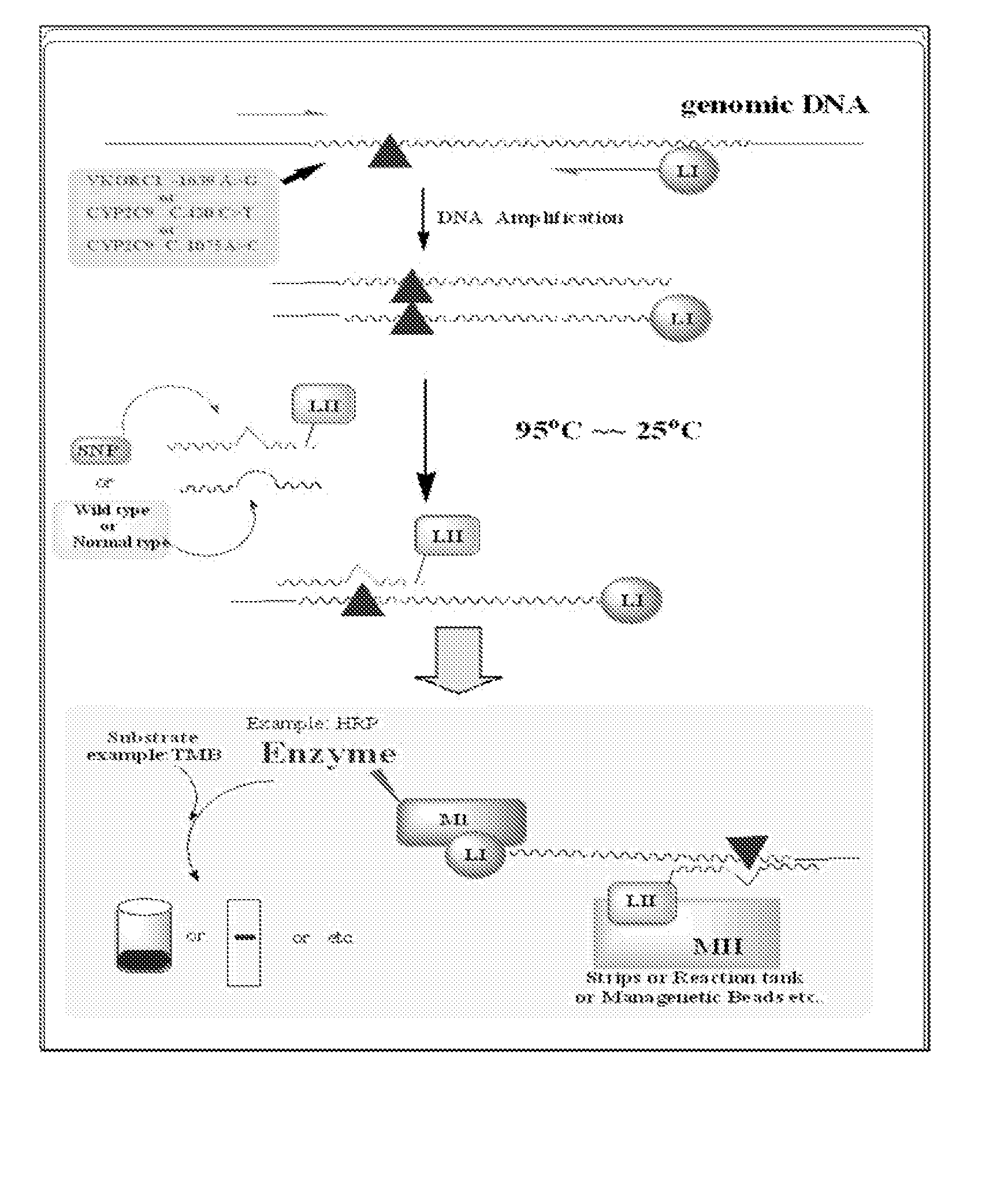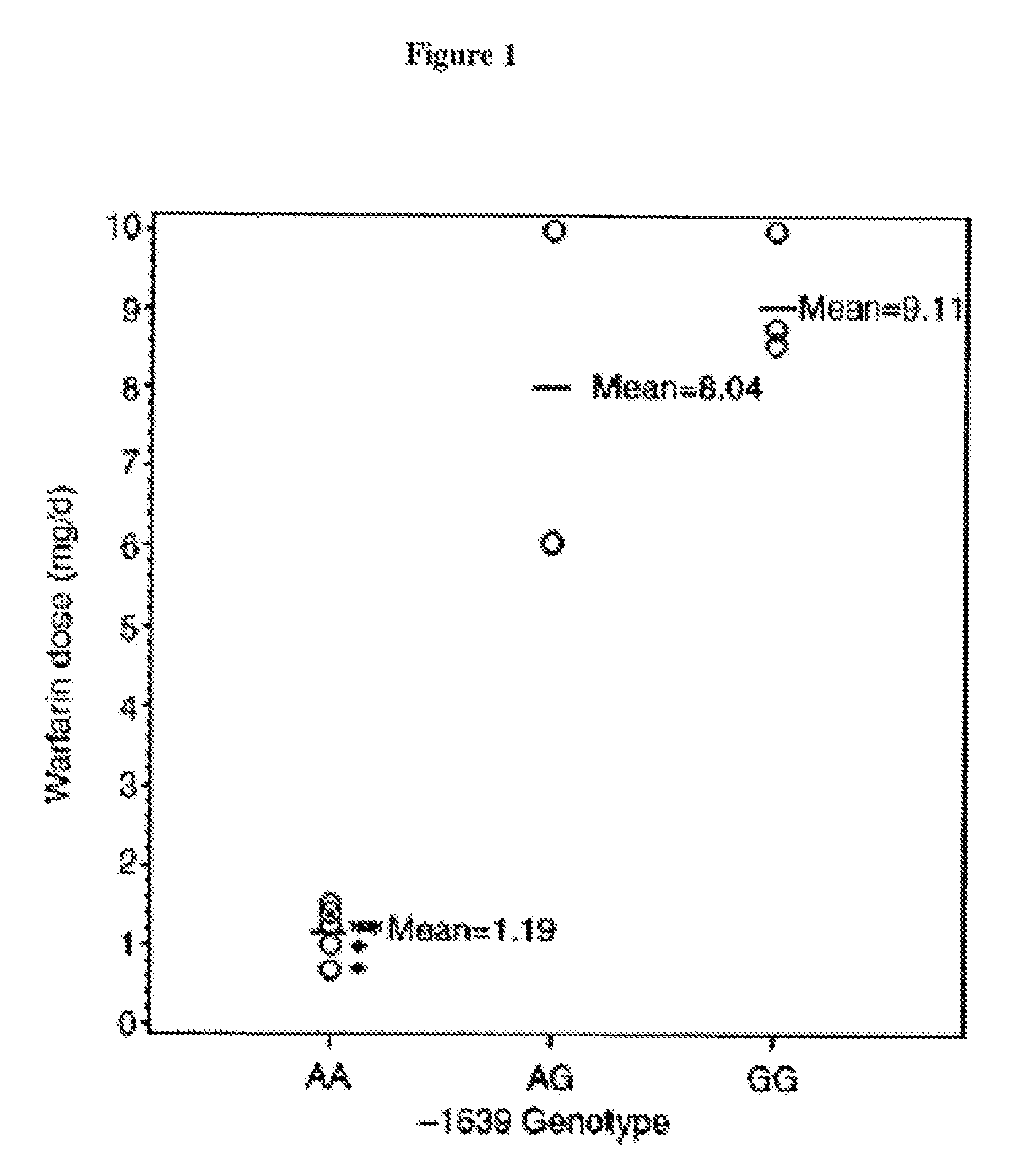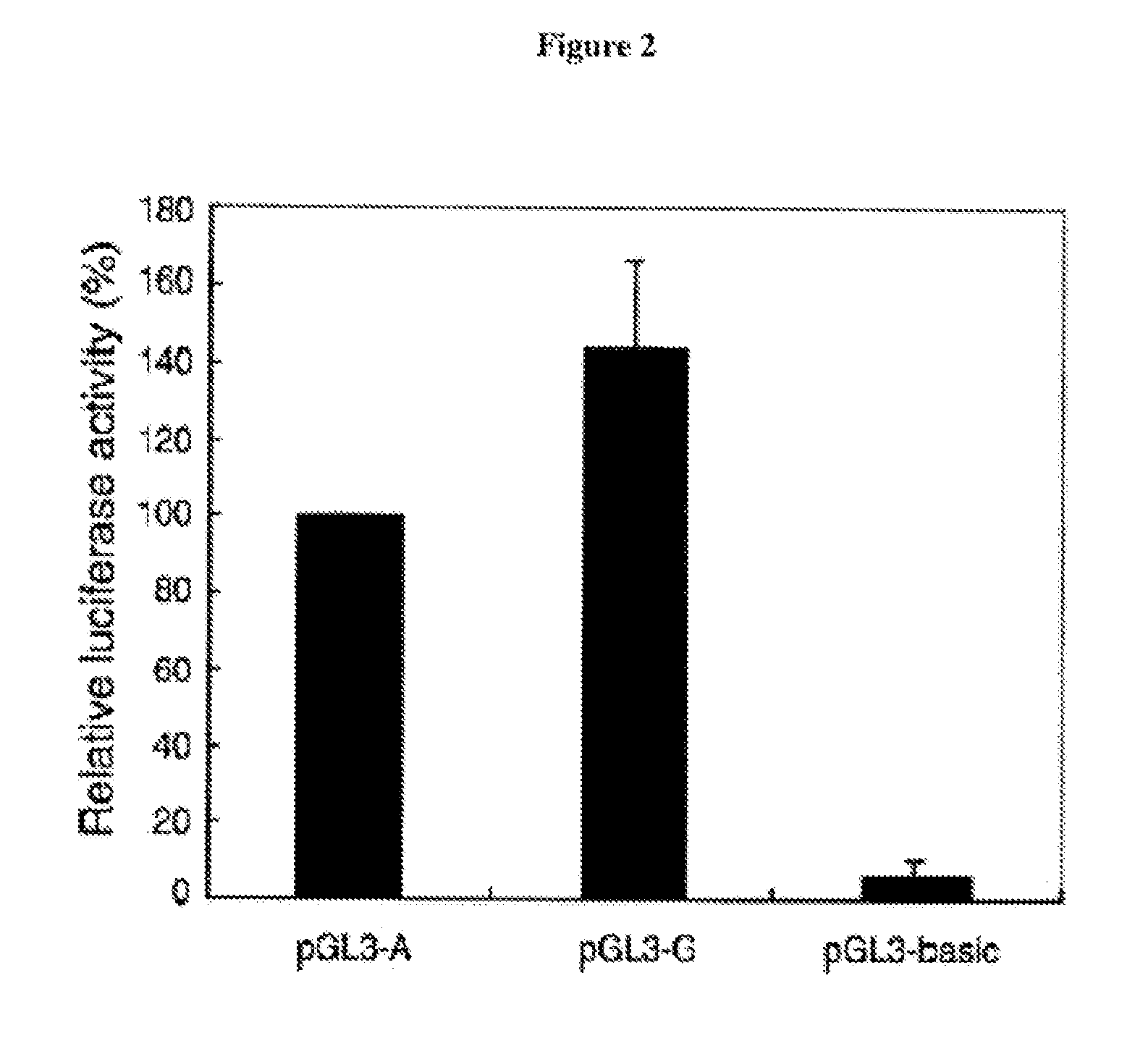Warfarin dosage prediction
a technology of warfarin and dosage, applied in the field of warfarin dosage prediction, can solve the problems of conflicting treatment of warfarin and the inability of polymorphisms of this gene to fully explain the variations of warfarin dose requirements
- Summary
- Abstract
- Description
- Claims
- Application Information
AI Technical Summary
Problems solved by technology
Method used
Image
Examples
example 1
Warfarin Dosage of Patients with Different Polymorphisms in VKORC1
[0048] Sixteen Han Chinese patients were recruited for this study. These patients received warfarin either at low or at high dose from cardiovascular clinics of four major medical centers in Taiwan (National Taiwan University Hospital, Kaohsiung Medical University Hospital, Taipei General Veteran Hospital, and Shin-Kong Wu Ho-Su Memorial Hospital). The mean maintenance dose of warfarin in Chinese patients is 3.3 mg / day, see Yu et al., 1996; and Xie et al., 2001. Among them, 11 patients, who received maintenance dose≦1.5 mg per day, were deemed as warfarin sensitive; and five, who were on warfarin maintenance dose≧6 mg per day, were deemed as warfarin resistant. See Table 2 below.
[0049] Genomic DNAs were isolated from these patients using the PUREGENE™ DNA purification system (Gentra systems, Minnesota, USA). CYP2C9 and VKORC1 DNA sequence variants were first determined by direct sequencing (Applied Biosystems 3730 D...
example 2
Polymorphism at Position VKORC1 −1639 G>A of the VKORC1 Gene in Random Chinese Patients Receiving Warfarin
[0053] Randomly selected 104 Chinese patients, 95 normal Chinese controls (selected from a biobank, in which 3312 Han Chinese descendants were recruited based on the geographic distribution across Taiwan) and 92 normal Caucasian controls (Cat. No, HD100CAU, National Institute of General Medical Sciences Human Genetic Cell Repository, Camden, N.J., USA) were participated in this study. The Chinese controls and all participating patients receiving warfarin therapy were unrelated Han Chinese residing in Taiwan. The Han Chinese forms the largest ethnic group in Taiwan, making up roughly 98 percent of the population. None of the participants were aboriginal Taiwanese, which account for the remaining 2% of the Taiwan's population.
[0054] The average daily dose of warfarin was calculated from a one-week-period, and the latest international normalized ratio (INR) of each patient was re...
example 3
Frequencies of VKORC1 −1639 G>A Polymorphism and CYP2C9 Variants in Chinese and Caucasians
[0057] It is well known that the Chinese population requires a much lower warfarin maintenance dose than the Caucasian population. To test whether differences in the VKORC1 −1639 genotype frequencies could account for the inter-ethnic differences in warfarin dosages, 95 normal Han Chinese subjects and 92 normal Caucasian subjects were genotype following the methods described above. In the Caucasian population, homozygous AA at position −1639 of the VOKRC1 gene had the lowest frequency, while the AG and GG genotypes made up the majority of the population (AA: 14.2%; AG: 46.7%; and GG: 39.1%).
[0058] In contrast, homozygous AA at position −1639 of the VKORC1 gene made up the majority of the Chinese population (i.e., 82.1%), while the rest of the population carrying heterozygous AG (i.e., 17.9%). Homozygous GG was not found in the selected Chinese patients. This AA / AG / GG was similar in the 104 wa...
PUM
| Property | Measurement | Unit |
|---|---|---|
| temperature | aaaaa | aaaaa |
| temperature | aaaaa | aaaaa |
| volume | aaaaa | aaaaa |
Abstract
Description
Claims
Application Information
 Login to View More
Login to View More - R&D
- Intellectual Property
- Life Sciences
- Materials
- Tech Scout
- Unparalleled Data Quality
- Higher Quality Content
- 60% Fewer Hallucinations
Browse by: Latest US Patents, China's latest patents, Technical Efficacy Thesaurus, Application Domain, Technology Topic, Popular Technical Reports.
© 2025 PatSnap. All rights reserved.Legal|Privacy policy|Modern Slavery Act Transparency Statement|Sitemap|About US| Contact US: help@patsnap.com



